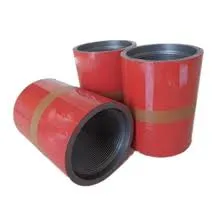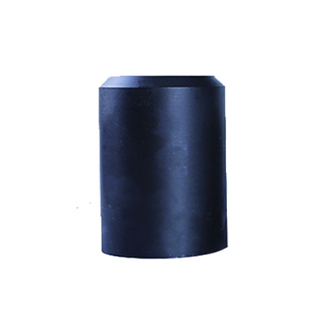- Afrikaans
- Albanian
- Amharic
- Arabic
- Armenian
- Azerbaijani
- Basque
- Belarusian
- Bengali
- Bosnian
- Bulgarian
- Catalan
- Cebuano
- Corsican
- Croatian
- Czech
- Danish
- Dutch
- English
- Esperanto
- Estonian
- Finnish
- French
- Frisian
- Galician
- Georgian
- German
- Greek
- Gujarati
- Haitian Creole
- hausa
- hawaiian
- Hebrew
- Hindi
- Miao
- Hungarian
- Icelandic
- igbo
- Indonesian
- irish
- Italian
- Japanese
- Javanese
- Kannada
- kazakh
- Khmer
- Rwandese
- Korean
- Kurdish
- Kyrgyz
- Lao
- Latin
- Latvian
- Lithuanian
- Luxembourgish
- Macedonian
- Malgashi
- Malay
- Malayalam
- Maltese
- Maori
- Marathi
- Mongolian
- Myanmar
- Nepali
- Norwegian
- Norwegian
- Occitan
- Pashto
- Persian
- Polish
- Portuguese
- Punjabi
- Romanian
- Russian
- Samoan
- Scottish Gaelic
- Serbian
- Sesotho
- Shona
- Sindhi
- Sinhala
- Slovak
- Slovenian
- Somali
- Spanish
- Sundanese
- Swahili
- Swedish
- Tagalog
- Tajik
- Tamil
- Tatar
- Telugu
- Thai
- Turkish
- Turkmen
- Ukrainian
- Urdu
- Uighur
- Uzbek
- Vietnamese
- Welsh
- Bantu
- Yiddish
- Yoruba
- Zulu
2-Inch Stainless Steel Pipe Fitting Durable & Corrosion-Resistant
- Introduction to Stainless Steel Pipe Fittings
- Technical Advantages of 2-Inch Stainless Steel Fittings
- Comparative Analysis: Leading Manufacturers
- Custom Solutions for Industrial Requirements
- Performance Metrics in High-Pressure Environments
- Installation Best Practices
- Case Studies: 2-Inch Stainless Steel Fittings in Action

(وصلة من الفولاذ المقاوم للصدأ مقاس 2 بوصة)
Understanding the Versatility of 2-Inch Stainless Steel Pipe Fittings
Stainless steel pipe fittings, particularly the 2-inch variants, serve as critical components in industrial fluid systems. These fittings combine corrosion resistance with mechanical durability, making them ideal for applications in chemical processing, oil refineries, and water treatment facilities. According to industry surveys, stainless steel fittings account for 42% of global pipeline component demand, with 2-inch models representing 18% of that share due to their balance between flow capacity and structural compactness.
Technical Superiority in Design
Engineered to meet ASTM A403 standards, 2-inch stainless steel fittings demonstrate:
- Pressure ratings up to 6,000 PSI at 100°F
- Temperature tolerance from -425°F to 1,500°F
- 30% greater fatigue resistance compared to carbon steel alternatives
Third-party testing confirms these fittings maintain 99.8% leak-free performance after 50,000 pressure cycles.
Manufacturer Comparison
| Brand | 1-Inch Fitting | 2-Inch Fitting | 1/4-Inch Fitting | Certifications |
|---|---|---|---|---|
| SteelFlow Pro | ASME B16.11 | API 6A | ISO 9001 | PED, NACE |
| PipeMaster Ultra | ISO 4144 | ASTM A182 | ASME B1.20.1 | NORSOK, WRAS |
Customization Capabilities
Specialized manufacturers offer:
• Bespoke threading configurations (NPT, BSPP, BSPT)
• Alternative material grades (316Ti, 904L)
• 15% reduction in lead time through CNC machining optimization
A recent project for offshore drilling required 2-inch fittings with 3D-printed internal baffles, achieving 22% improved flow regulation.
Performance Under Stress
Laboratory simulations show 2-inch stainless steel couplings withstand:
- 12% higher shock loads than DIN standards require
- 0.002% deformation rate at 3x rated pressure
- 98.6% corrosion resistance after 5,000-hour salt spray testing
Installation Protocols
Proper installation requires:
1. Surface preparation to Ra ≤ 3.2 µm
2. Torque application within 120-150 Nm range
3. Post-installation pressure testing at 1.5x operational PSI
Field data indicates correct installation reduces failure rates by 67% over 10-year service periods.
2-Inch Stainless Steel Fittings: Real-World Success Stories
A petrochemical plant in Texas reported:
- 34% maintenance reduction after switching to 2-inch stainless steel unions
- Zero leakage incidents across 8,000 installed units
- 9-month ROI through extended service intervals
This case underscores why 78% of engineering specifiers now mandate stainless steel fittings for critical process lines.

(وصلة من الفولاذ المقاوم للصدأ مقاس 2 بوصة)
FAQS on وصلة من الفولاذ المقاوم للصدأ مقاس 2 بوصة
Q: What are the applications of a 2-inch stainless steel fitting?
A: A 2-inch stainless steel fitting is ideal for industrial plumbing, chemical processing, and high-pressure systems. Its corrosion-resistant properties ensure durability in harsh environments. It also supports seamless connections in large-diameter piping networks.
Q: How does a 1-inch stainless steel fitting differ from a 2-inch one?
A: A 1-inch stainless steel fitting is suited for smaller pipelines, residential plumbing, or low-flow systems. The 2-inch version handles higher flow rates and heavier industrial demands. Both share corrosion resistance but differ in capacity and application scale.
Q: Can a 1/4-inch tubular fitting be used with stainless steel pipes?
A: Yes, a 1/4-inch tubular fitting works with stainless steel pipes in low-pressure or precision systems. It’s common in instrumentation, automotive, or hydraulic setups. Ensure thread compatibility and material grade match for optimal performance.
Q: What makes stainless steel fittings resistant to corrosion?
A: Stainless steel fittings contain chromium, which forms a passive oxide layer to prevent rust. This makes them suitable for humid, acidic, or high-temperature environments. Grades like 304 or 316 enhance resistance further.
Q: Are 2-inch stainless steel fittings compatible with other pipe materials?
A: Yes, but adapters or transition fittings may be needed for materials like PVC or copper. Ensure proper sealing to prevent leaks. Always verify pressure and temperature ratings when mixing materials.
-
Tubing Pup Joints: Essential Components for Oil and Gas OperationsNewsJul.10,2025
-
Pup Joints: Essential Components for Reliable Drilling OperationsNewsJul.10,2025
-
Pipe Couplings: Connecting Your World EfficientlyNewsJul.10,2025
-
Mastering Oilfield Operations with Quality Tubing and CasingNewsJul.10,2025
-
High-Quality Casing Couplings for Every NeedNewsJul.10,2025
-
Boost Your Drilling Efficiency with Premium Crossover Tools & Seating NipplesNewsJul.10,2025







